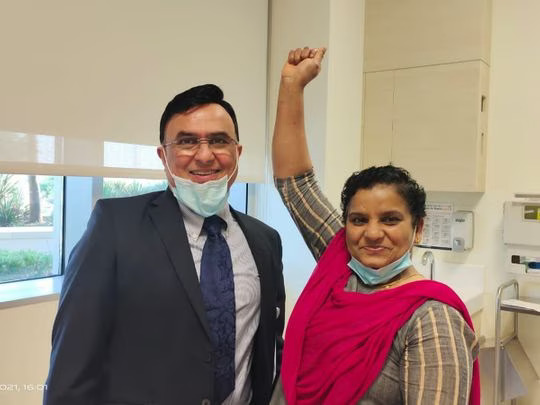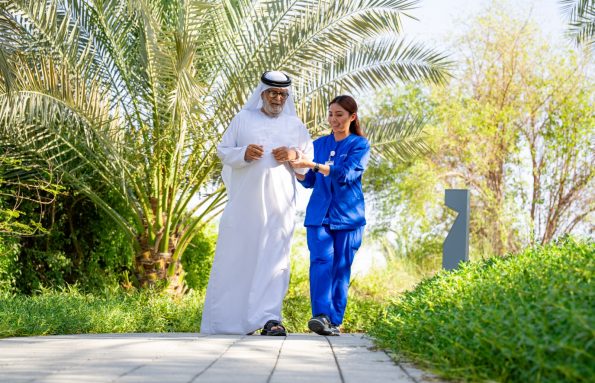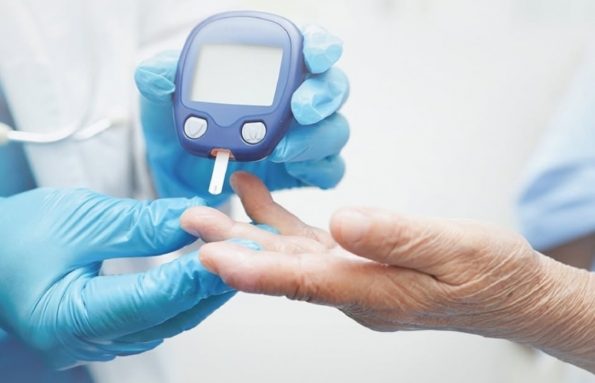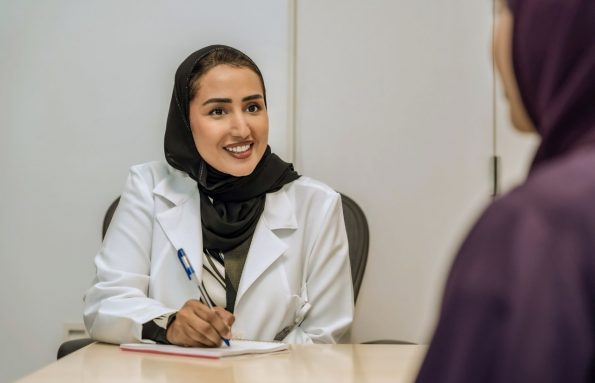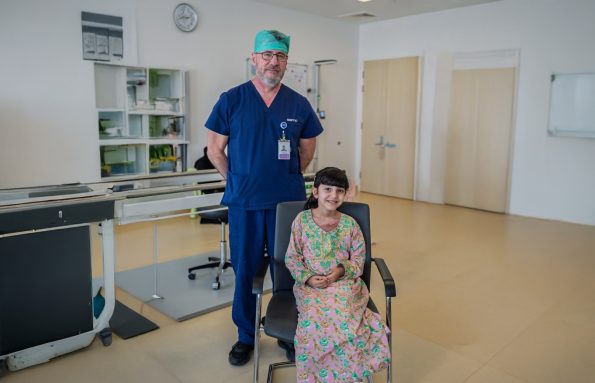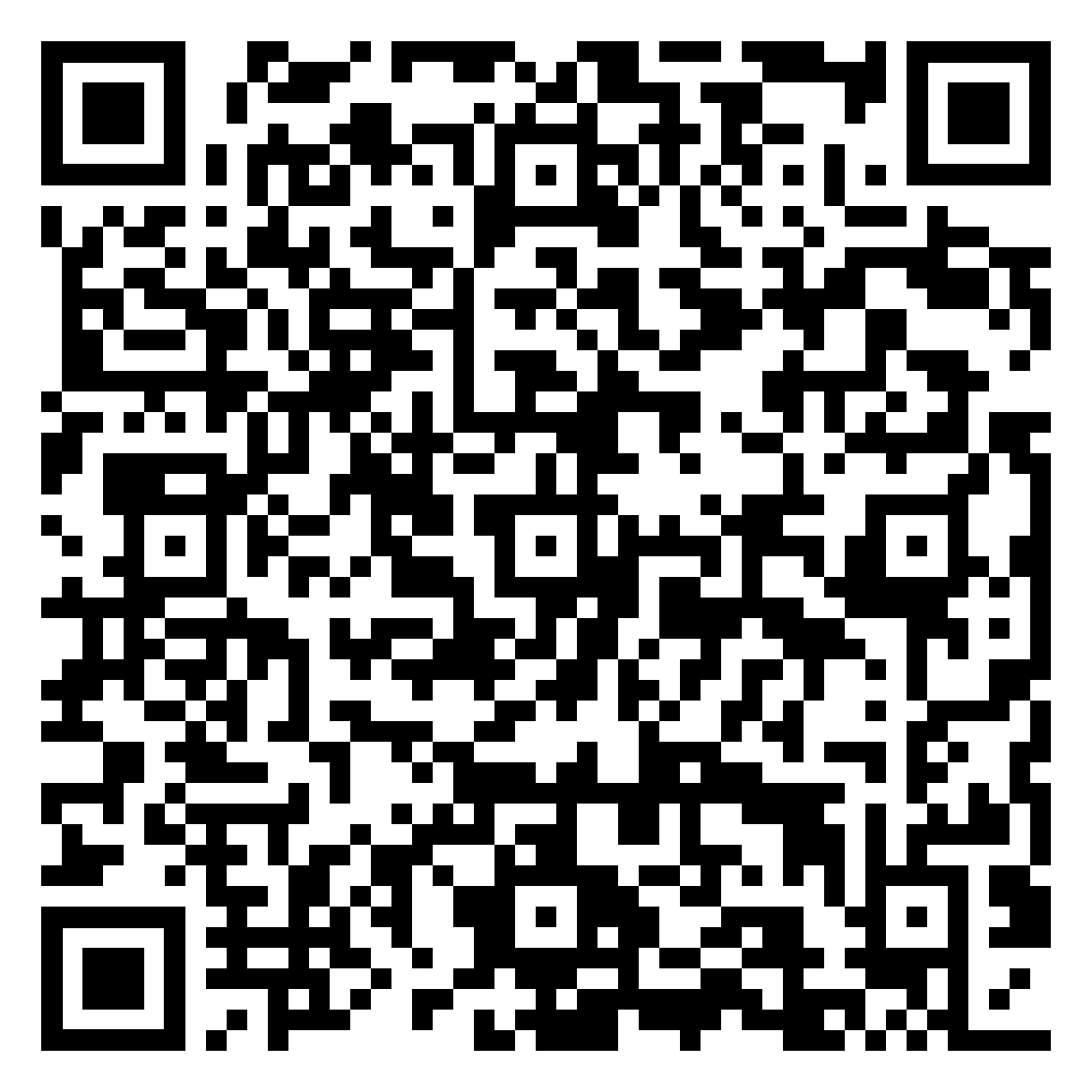In a complex and rare surgery, a team of UAE surgeons restored full range of movements to the nearly-paralysed shoulder of a 47-year-old woman, using a decellularised dermal allograft (donor tissue).
Decellularised donor grafts are tissues of human skin, stripped off the DNA of the donor and can be used in selective cases, to avoid any rejection of the graft.
Massive tear
Bindumol Raman, an Indian expat in Abu Dhabi, consulted Dr Ravi Kumar Trehan, consultant orthopaedic surgeon and medical director, Admissions and Transfers, at Sheikh Shakhbout Medical City (SSMC) in May 2021, with severe pain in her right shoulder and complete immobility.
Recounting the case, Dr Trehan told Gulf News: “The patient consulted me as she had acute pain and a completely functionless right shoulder. This happened when a child pulled at her right hand, causing a massive click on the shoulder, which had previous injury that had weakened her cuff. She was suffering from excruciating pain and pseudo paralysis.”
An MRI scan revealed a significant tear of the rotator cuff and retraction of three of the four tendons in the right shoulder. Dr Trehan said: “The patient had suffered such a massive and retracted cuff tear that it is usually very difficult to treat. Many such injuries require salvage operations or joint replacement surgeries that severely compromise shoulder function.”
Unusual technique
Since the patient was young, Dr Trehan decided to attempt to save her shoulder joint and not perform a complex reverse geometry joint replacement surgery, which would have been the conventional choice. However, given the fact that the patient had other health issues and had undergone a thyroidectomy, the surgery was delayed. Eventually, four months after the injury, Dr Trehan, accompanied by orthopaedic surgeons Dr Amin Elhelw and Dr Mahmoud Al Dihy, performed the surgery, using a decellularised dermal allograft to repair the remaining tendon back on the bone.
Explaining the decision to use donor dermal graft, Dr Trehan said: “We decided not to go down that route and perform the rotator cuff repair using decellularised dermal allograft augmentation. Usually, in case of tendon and rotator cuff injuries, a patient’s own tissue graft can be sutured for it to regenerate and heal. However, in this case, the patient had such a massive tear that there was nothing left in the shoulder to graft. Therefore, we decided to use an allograft to repair.”
What is a decellularised graft?
Elaborating on the choice of the graft, Dr Trehan further explained: “Usually, we use an auto graft (tissue from patient’s own tendon) to repair such injuries. In this case, there was literally a hole in her tendon, as her tear was massive. Therefore, there was no question of using her own tissue. In this case, we used a decellularised tendon graft, which means it was stripped off, of any vestiges of the DNA of the donor. This made it non-immunogenic, thereby eliminating the chances of rejection. We only retained the graft with its biomechanical properties or as a mere scaffolding to bridge that hole. Once this tissue integrates, the patient’s own cells will start growing on it.”
Full function restored
The patient was discharged within a week and four months after the surgery. She retained full functioning of her shoulder and had zero pain.
Since then, Raman is doing very well and expressed her gratitude to the medical team attending to her. In a letter to the hospital, she wrote: “Thank you for the exceptional surgery through which I have got back my normal life. My hand was totally inactive prior to the surgery. Now I can move it perfectly and conduct all daily activities.”

